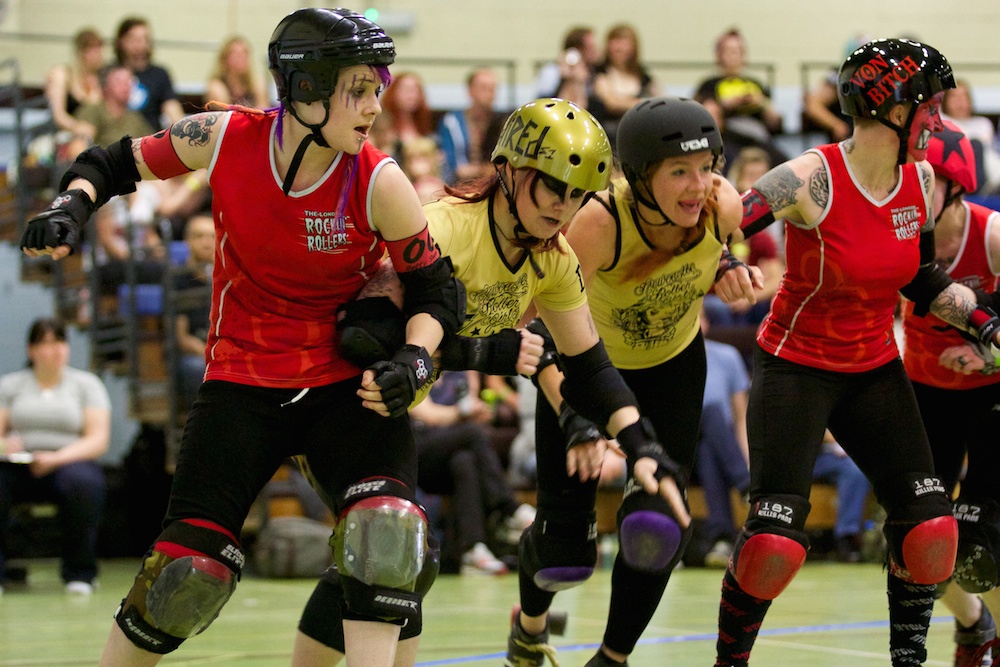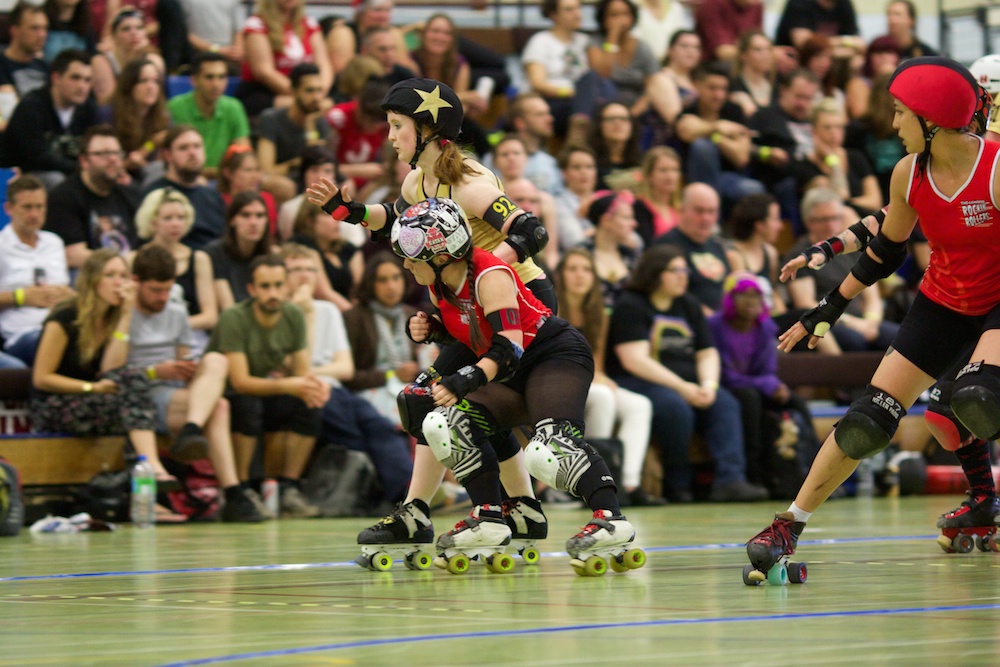[su_youtube_advanced url=”http://youtu.be/R_smD-SZIFk?list=UUwgbgWNS4StajoMZuVYVZ6w” width=”1280″ height=”720″ controls=”alt” autohide=”yes” loop=”yes” rel=”no” modestbranding=”yes”][su_youtube url=”https://www.youtube.com/watch?v=3ea334H0qBk”][/su_youtube_advanced] Roller Derby is one of the fastest growing sports in the UK with leagues all over the country. Women of all types are taking to it like ducks to water and having a hoot by the look of it. Webcast Sport is currently in talks with one of the leagues, with the aim of bringing the sport to our site as one of the foundation sports. This report is from Healthista.com, one of Britain’s leading women’s health sites.
It’s a Saturday afternoon and we’re seated around a stadium. In its centre, women clad in fishnets, coloured hair and terrifying face paint ride around on roller skates at high speed bumping into and out of each other, falling over and getting back up repeatedly, pushing and shoving. Their jerseys sport pun-wielding names such as cLeo Slayer, Inya Endo and Elf Hazard. It’s as gung-ho as it gets but there’s no doubt that in amongst the jolting, grunts and shouts, they’re having a ball. Welcome to the wild world of women’s Roller Derby, one of the fastest growing sports in the world.
Their jerseys sport pun-wielding names such as Cleo Sayer, Inya Endo and Elf Hazard.

Roller derby is an all-female full contact sport on roller skates, with its roots in 1920s’ America. It’s modern version started in 2000 when a group of skaters in Texas set themselves up to start a roller derby league – they rewrote the rules so the focus was more on skating skills and athleticism and less on entertainment and ‘pretend fights’ as was the case previously.

It’s now an all-female full contact sport played by two teams of five quad skaters roller skating in the same direction around a track. The game is a series of short matchups called ‘jams’ in which both teams designate a scoring player, referred to as the ‘jammer’ with a star helmet cover, who scores points by lapping members of the opposing team.
The two teams attempt to assist their own jammer while holding back the opposing jammer — in effect, playing both offence and defence simultaneously.
In fact, Roller Derby is one of the fastest growing sports in the world, played by more than 1,200 amateur leagues in over 36 countries.
There are different teams throughout the UK who run their own leagues and the one we watched and interviewed, featured in this video, are The London Rockin’ Rollers. They’re quite a force and in 2012, one of their players took part in the first ever England World Cup Roller Derby team. Formed in March 2007, they were the third roller derby league in the UK – today there are almost a hundred leagues in the UK and Ireland alone.
But look at the rules and requirements and see the words ‘full contact’ and you’ll probably think it’s all athletes and super-fitties. Think again. We spoke to a few of the London Rockin’ Rollers and they were women in their 30s and 40s who worked in TV and healthcare, had been stay-at-home mums and former couch potatoes and were now these lean, mean rolling machines. They all agree that quite aside from the incredible community and camaraderie of the sport, it also gets you fit fast.





